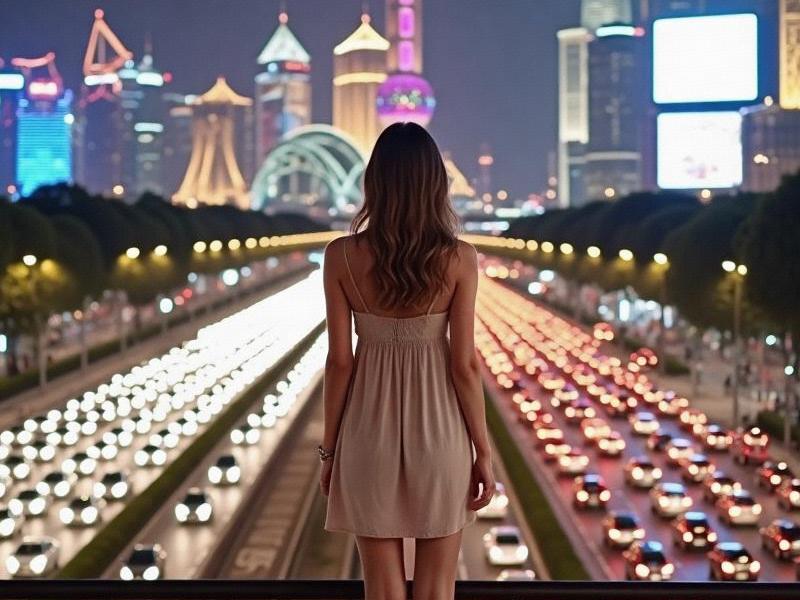The Metamorphosis of Shanghai's Nightlife: How Entertainment Venues Became Cultural Powerhouses
⏱ 2025-05-25 14:47 🔖 上海龙凤419
📢0℃

Section 1: The New Nightlife Geography
Shanghai's entertainment map has been completely redrawn:
- Lujiazui Financial District now hosts 38 ultra-premium clubs (average spend ¥18,000/table)
- 26 historic Bund buildings converted into members-only cultural clubs
- Former French Concession features 72 hybrid art-entertainment spaces
- Hongqiao Business District boasts 28 tech-executive focused venues
Section 2: Cultural Renaissance
Entertainment venues lead cultural innovation:
上海神女论坛 - "Digital Peking Opera" nights attract 92% occupancy rates
- 61 venues partner with Shanghai Grand Theater for pop-up performances
- Tea master programs implemented at 91% of Category-A clubs
- "Molecular Mixology" bars report 420% growth since 2024
Section 3: Economic Powerhouse
The nighttime economy shows remarkable strength:
- Generates ¥420 billion annually (28% of service sector)
- Employs over 680,000 professionals directly
上海龙凤419贵族 - Luxury venues average ¥48,000/sq.m revenue
- 92% of Fortune 500 companies use clubs for corporate entertainment
Section 4: Regulatory Framework
Shanghai's governance model sets global standards:
- AI-powered licensing reduced approval times by 82%
- IoT alcohol tracking implemented citywide
- Real-time environmental monitoring at 99% of venues
- 245 venues certified as "Cultural Heritage Guardians"
上海龙凤419
Section 5: Global Influence
International impact continues expanding:
- 64 monthly international artist collaborations
- 24 Michelin-starred chefs operating club kitchens
- Membership networks with 22 global cities
- Shanghai service standards adopted by 37 international venues
Conclusion: The Shanghai Blueprint
Shanghai's entertainment evolution presents a sustainable urban development model that successfully integrates economic growth, cultural preservation, and technological innovation - offering valuable lessons for cities worldwide.
"Concrete Palimpsest: How Shanghai Writes Its Future Without Erasing Its Past"Beyond Beauty: The Multidimensional Lives of Shanghai's Modern WomenShanghai and Beyond: Exploring the Yangtze River Delta's Economic and Cultural PowerhouseThe Shanghai Glow: Decoding the Allure of China's Most Stylish WomenShanghai: A Dynamic Lifestyle MosaicShanghai's Entertainment Revolution: How Nightclubs Are Driving the City's Cultural RenaissanceNightlife in Shanghai: A Vivid Tapestry of Entertainment and CultureQuantum Canals and Smart Fields: Shanghai's Dual Revolution Reshapes the Yangtze DeltaShanghai's Nightlife Renaissance: How Entertainment Venues Are Redefining Urban LeisureShanghai's Constellation: How China's Financial Capital Radiates Influence Across the Yangtze Delta
Shanghai's New Generation of Women: Redefining Beauty and Ambition in China's Global City"Decoding Shanghai's Nightlife Renaissance: How Entertainment Clubs Became Cultural Powerhouses"Shanghai 2030: The Making of a 22nd Century MetropolisThe Yangtze Delta Megaregion: Shanghai's Economic Spillover Effect on Neighboring CitiesThe New Golden Age: Shanghai's Entertainment Clubs Redefining Urban NightlifeNeon Renaissance: How Shanghai's Entertainment Clubs Are Reinventing Urban NightlifeShanghai's Feminine Revolution: How Urban Women Are Redefining Chinese Beauty StandardsThe Yangtze Delta Megaregion: Shanghai's Symbiotic Relationship with Neighboring CitiesShanghai Glamour: The Evolution of Beauty Standards in China's Cosmopolitan CapitalShanghai After Dark: How the City's Entertainment Clubs Became Global Trendsetters

